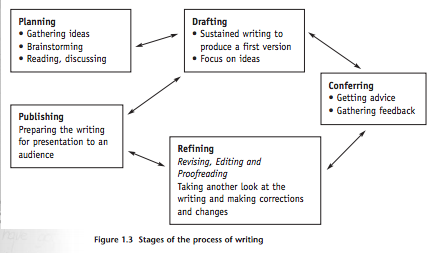
Curriculum and Instruction
Why We Teach Literacy
-
Power of Literacy
-
Gives ability to make informed decisions in terms of:
-
Personal and family health/wellbeing
-
Political participation
-
Economics, income, and personal finances
-
= All of these reasons lead to greater empowerment and self-esteem
-
= Better informed society
-
-
-
21st Century Literacy
-
Ability to critically analyze all types of literature
-
Still need foundation basic of reading and writing skills
-
Bloom’ Taxonomy - need understanding before creating
-
-
Criticize text to determine any biases and/or misleading data (social media)
-
Distinguish reliable resources from inaccurate ones
-
Requires communication of knowledge
-
Present arguments based on true information that has been researched
-
-
Use ideas in text to problem solve by using these ideas and applying them
-
Intertwine concepts and ideas to connect into the larger picture to
-
Recognize patterns and categorize information
-
-
-
-
Proficiency in using technology
-
Most information we use and find comes from the internet
-
Distinguish reliable resources from inaccurate ones (repeat)
-
Use tech to communicate ideas in a compelling and engaging way
-
Understand how the brain learns and uses knowledge in everyday life
-
Meta-cognition = thinking about thinking
-
-
Ability to communicate and collaborate knowledge
-
Successful solutions often include multiple perspectives and the deliberations between these differing perspectives offers a thought out solution
-
-
Critical Literacy for Students
-
Important to encourage inquiry
-
Beyond encoding and decoding
-
Understand abstract concepts (symbols, past, future, different places)
-
Notice biases, especially those that support stereotypes and inequalities
-
Ability to write/communicate their own perspective, as well as others
-
-
Tails, poems, novels, comics
-
Puts morals, right/wrong into a perspective that they can understand
-
Allows them to see patterns in concepts to better understand them
-
-
See themselves in books
-
Put yourself in someone else's shoes and see a different perspective
-
Important to choose text where all students can relate to a character/concept
-
-
-
Must be at appropriate grade level
-
Abstract concepts may be at too high of a level
-
Teach concepts at an appropriate level
-
Wouldn’t show Schindler’s List to a grade one class
-
-
-
Reading Instruction
-
The Five Components of Successful Reading Instruction According to the NILF
-
Phonemic Awareness
-
Phonics
-
Vocabulary
-
Fluency
-
Text Comprehension
-
Word document includes an in depth look at the significance of each component
-
-
Overview of Reading Procedures
-
This is a great visual that compasses many of the instructional techniques used for reading
-
-
Steps for Modeled Reading
-
Introduce text and establish context
-
Discuss cover, end papers, authour, illustrator, etc
-
Have students make predictions about the book
-
-
Ask relevant questions that activate prior knowledge
-
Read text fluently and in an excited manner
-
Explain vocab
-
Do your think alouds for deciphering words
-
-
Wrap up with a debrief on:
-
Student predictions
-
Moral/message of the story
-
Connect to lesson/POS outcome
-
-
Example: grade 2 - https://explicitinstruction.org/video-elementary/elementary-video-4/
-
-
Step for Shared Reading
-
Introduce text and establish context
-
Discuss cover, end papers, authour, illustrator, etc
-
-
Have students make predictions about the book
-
Ask relevant questions that activate prior knowledge
-
Shared reading strategies
-
Choral reading - everyone reads aloud in unison (texts that include retention work well for this)
-
Call and response - teacher reads, and students repeat
-
-
Pause to discuss key points and do think alouds
-
Wrap up with a debrief on:
-
Student predictions
-
Moral/message of the story
-
Connect to lesson/POS outcome
-
-
Example: K/1 - https://www.youtube.com/watch?v=ccsrF0vCYE0&feature=emb_rel_pause
-
-
Steps for Guided Instruction (In small groups)
-
Choose text that is based on the desired outcome and grouping
-
Groups can be based on reading level, similar interests, social reasons, etc
-
-
Have students read or whisper read
-
Allow students to discuss their findings with the book (Have a few prompting questions)
-
Teacher discusses the text and reading strategies used with the students
-
Example: grade 1 - https://www.youtube.com/watch?v=I4tm4NKpHzs (2:00 - 2:50)
-
-
Steps for Independent Reading
-
Follow reading progression (medelled, shared, guided, independent)
-
Allow students to choose THEIR OWN book (can be a leveled book, but it MUST be chosen by the student
-
Have students read their book
-
Do daily check-ins with students to observe progress and keep them excited about reading
-

Writing Instruction
-
Teach Writing The Way Real Writers Write (Laurie Halse Anderson)
-
Act like an editor - go through writing with a lens to make it better
-
Always put a happy face on students writing - keeps them motivated and feel special
-
Encourage students to use their OWN voice, not your voice and not a beige voice
-
Want to make the writer (student) better, NOT the paper - give students feedback that will enhance their writing skills
-
Students should start with a feeling or curosirsty & some reacher for the basis of their writing
-
Just write - don’t need to worry about grammar and spelling right away
-
Hover instead of rushing through - allow students to work with their writing
-
Create first, revise lated (writing is a process, not a product)
-
You (teacher) are the bridge - show the writing process and show your own writing process
-
-
Revision is Crucial
-
Taking something that is good and making it great
-
Students should be revising ideas and grammar to make their writing more clear
-
Allow students to re-read work and make it better (clarification and not correction)
-
Real writers are ALWAYS revising
-
-
Overview of Instructional Procedures
-
This is a great visual that compasses many of the instructional techniques used for writing
-
-
Steps for Modelling Writing
-
Choose genre and format that will best suit the teaching point
-
Explain teaching point to students
-
Purpose of writing and format of writing
-
Activate students’ topic knowledge through questioning
-
Use a think aloud to MODEL the thought process
-
Think aloud and show visually what students should be doing
-
Plan what you will write and what you will say in your think aloud
-
Example: grade 1/2 - https://www.youtube.com/watch?v=0kWEDcQ9yuo
-
-
Steps for Shared Writing
-
Use students ideas (words, sentences, phrases) to construction writing
-
Teacher is the scribe and the students are the author
-
Prompt students, by asking them pointed questions to emphasis the teaching point
-
Use think alouds to reinforce the teaching point
-
-
Example: grade 2 - https://www.youtube.com/watch?v=o9nX2laB9q0
-
Steps for Guided Writing (in small groups)
-
Group students based on writing level, social reasons, personal interest, etc
-
Have a specific teaching point that students will focus on
-
Teach this point in a mini-lesson
-
Have students compose their own text, with some teacher support
-
Have students share their writing and have them explain how/why it pertains the the teaching point
-
Example: grade 3 - https://www.youtube.com/watch?v=o9nX2laB9q0
-
-
Steps for Independent Writing
-
Follow writing progression (modelled, shared, guided and independent)
-
Teach a mini-lesson the focuses on the teaching point
-
Students will create own texts based on what they have learned in modelled, shared, guided and independent writing
-
Have students write a variety of genres and text types
-
Have students share drafts with teacher and peers
-
Celebrate all levels and steps of the writing process
-
Then revise writing the make better and emphasis the teaching point
-
-
Steps to Teach Narrative Story Writing
-
Show students stories are everywhere and it all different formats
-
Study the structure of a story (arch)
-
Read models - students love to hear about their teachers stories
-
Story map - model for students
-
Quick draft - model for student (can be in shared or modeled time)
-
Plan the pacing - what parts will have more weight, what will be the bulk of the story
-
-
-
Long draft
-
Revise/workshop
-
Edits - fix spelling and grammar
-
Showing off - put it all together in a book
-
Differentiation
-
Key Elements of Differentiated Instruction
-
Knowing your students
-
Understanding the curriculum
-
Providing multiple pathways to learning
-
Sharing responsibility with students
-
Taking a flexible and reflective approach
-
-
Alberta Education Differentiation Document (Overview)
-
Extending/Enriching
-
Initial learning opportunity should already abstract, complex and interrelated
-
We do not want these students to just do more busy work, rather we want to extend the task so they can show a more complex understanding of the concept
-
-
Use strategies like:
-
Tiered assignments - grow in complexity
-
Use more open ended questions
-
Independent projects
-
Cluster groups of students who are at the same level, so they can work on assignments that will challenge them
-
Increase access to diverse materials and resources -
-
Self - assessment - ask the students how they found the assignment (too hard?, too easy?, etc)
-
-
-
Beginning/Developing
-
Initial learning opportunity should already abstract, complex and interrelated
-
We do not want these students to just do lease, rather we want to adjust tasks to ensure that they are cognitively appropriate
-
-
Use strategies like:
-
Small-group/one-on-one time (e.i. guided reading time)
-
Flexible grouping - ensure that the beginning student has a valuable job
-
Independent learning activity (more time)
-
Technology
-
Explicit instructions - make assignments easy to follow
-
Scaffolding support: graphic organizers, “cheat sheets,” memory prompts, lists, colour code key, outline
-
Components - songs and movement
-
Place in class (ZPD) - where is the best physical place for that particular students
-
-


